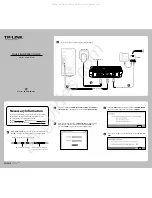
35
These external services may be modified by clicking its corresponding edit icon, or they
may be deleted by clicking the corresponding delete icon. Though there are seven fields
available to configure the Virtual Server, in most cases, only the IP address of the
Virtual Server will be needed for implementation. To enable an already existing Virtual
Server, click its corresponding edit button, configure the appropriate fields listed below
and set the
Status
fields to
Enabled
by clicking the radio button. To configure other
virtual servers for the Router, configure the following fields and click
Apply
.
Index
This is an index number used to identify the Virtual Server
entry.
Private IP
Enter the IP address of the Virtual Server.
Protocol Type
The protocol type used for the Virtual Server. The user may
select
TCP
,
UDP
or
Both
, depending on the type of Virtual
Server implemented.
Start/End Global Port
Enter a range of ports on the device on the WAN side of the
network that will be accessing the Virtual Server currently being
configured. Commonly, this range of ports is identical to the
local range of ports. Existing Virtual Servers may already have
their well-known port ranges listed but this may need to be
changed in certain circumstances.
Start/End Local Port
Enter the range of ports of the Virtual Server’s computer.
Existing Virtual Servers may already have their well-known port
ranges listed but this may need to be changed in certain
circumstances.
















































